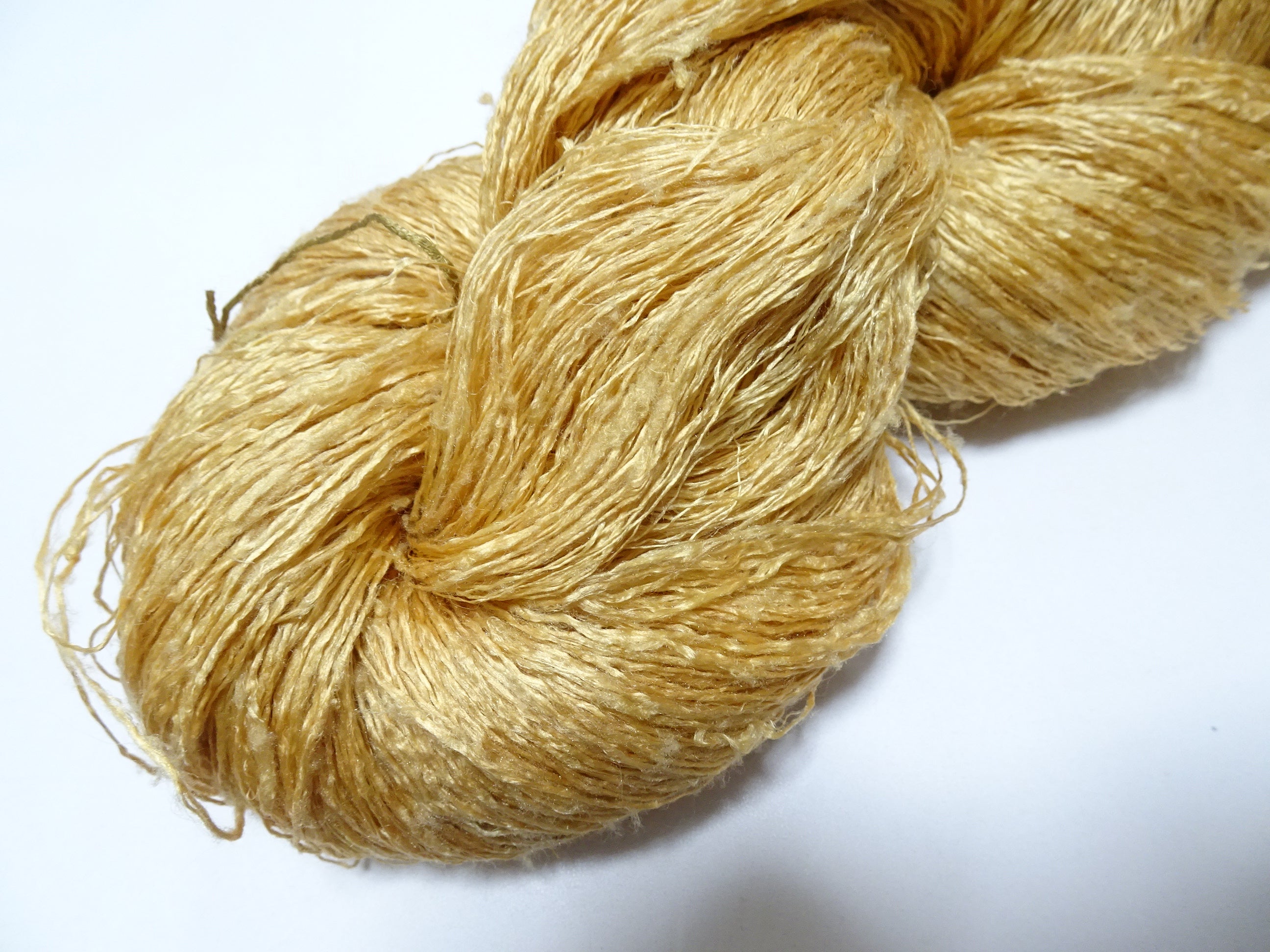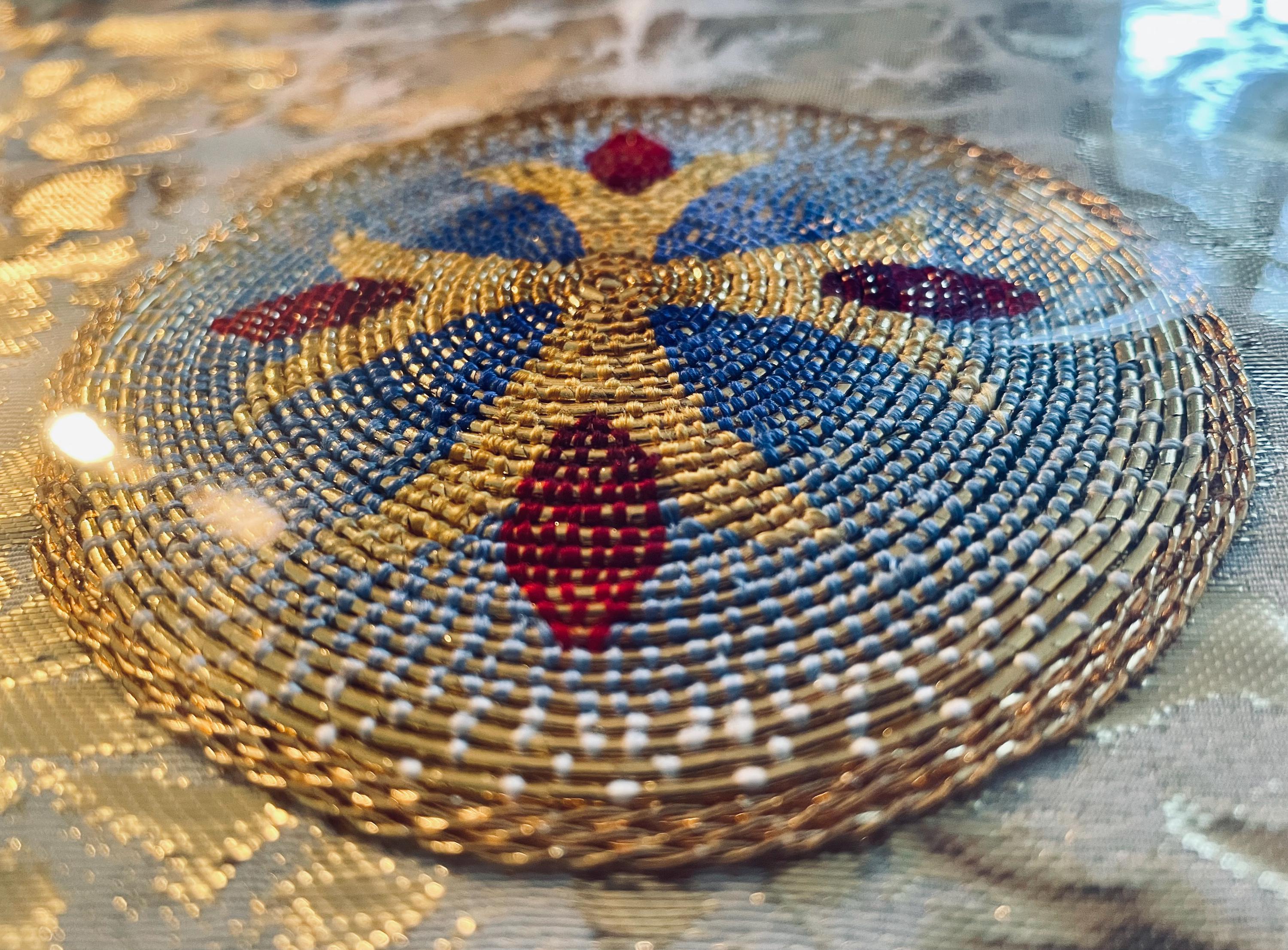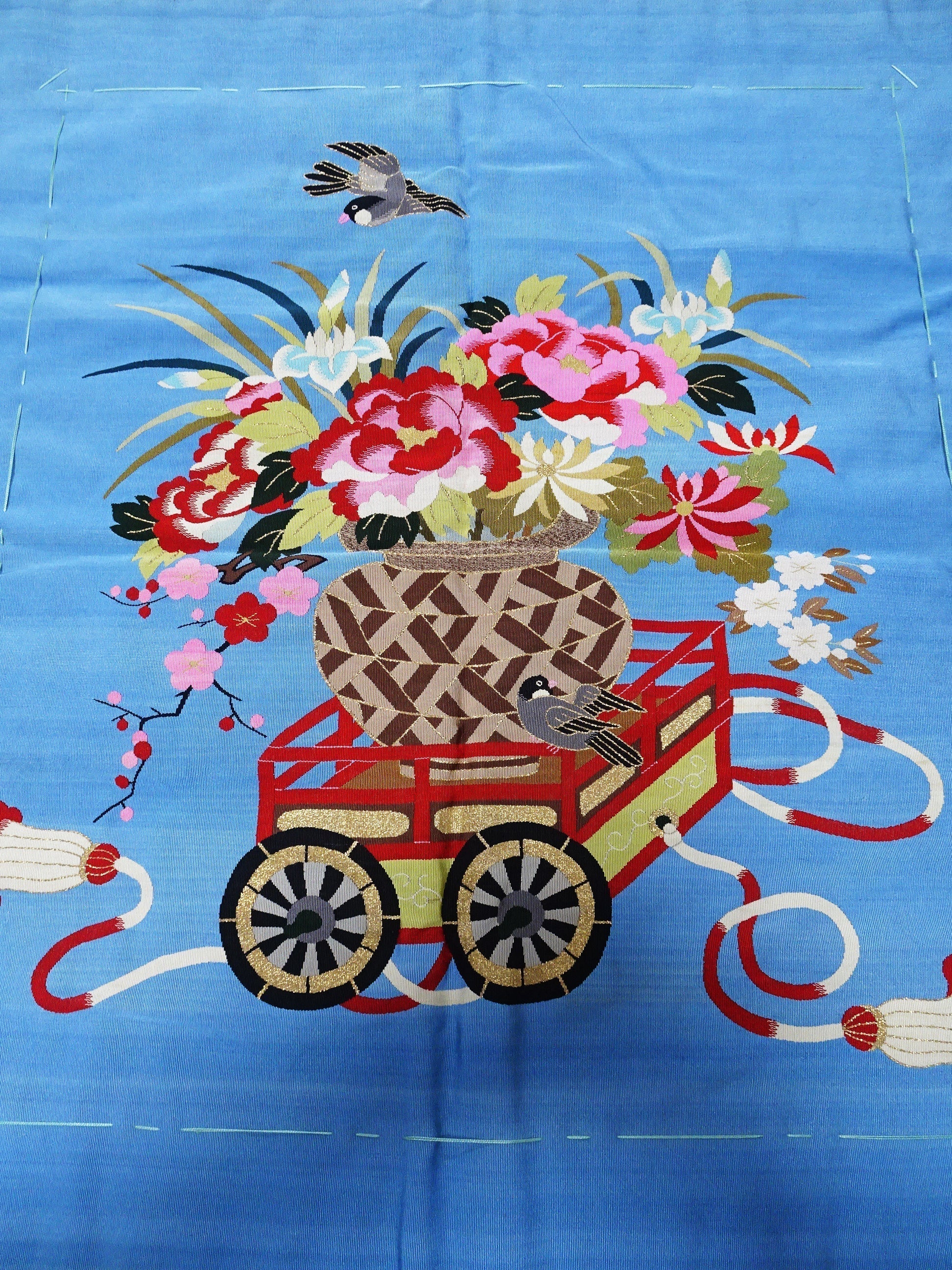Basic definition
**Tsumugi silk thread** is thread that is drawn by hand from silk floss (a cotton-like material made by spreading out a cocoon).
It is not machine-spun, but traditionally hand-spun, which gives it its characteristic uneven thickness and knots.
Raw materials: silk floss and cocoons
The raw material for tsumugi thread is silk floss made from cocoons.
Normal raw silk used in silk fabrics is pulled out of the cocoons in a filament-like form,
but for tsumugi thread, the cocoons are boiled and spread out to make a cotton-like form, which is then pulled out by hand and twisted to make thread.
Characteristics of Tsumugi Thread
Characteristics Description
Uneven thickness Because it is hand-spun, thick and thin parts are mixed, creating a unique texture.
Neps There are small balls and protrusions on the surface, which give it the "tsumugi-like" feel.
Soft and durable Because it is spun from pure cotton, it is gentle on the skin and becomes softer the more you wear it.
Subtle luster Compared to raw silk, it has a matte texture and a subdued impression.

Tsumugi thread manufacturing process (hand spinning)
Boiling the cocoons: The cocoons are boiled to soften them.
Making silk floss: The cocoons are spread out and stretched into a cotton-like form to make silk floss.
Spinning the thread: The silk floss is pulled out with the fingers and twisted to make thread.
Dyeing: The spun thread is dyed with vegetable dyes or chemical dyes (mostly yarn-dyed).
Warping and weaving: The dyed threads are arranged lengthwise and widthwise to weave.

Tsumugi thread is a material that supports the unique beauty of Japan, taking advantage of the warmth and unevenness of the hand that machines cannot replicate. It is used for a wide range of purposes, from high-end everyday clothing to modern crafts, and it can be said that the texture of the thread itself determines the value of the work.

Go to the Tsumugi Silk Thread sales page on this site!
Go to the Tsumugi Silk Thread sales page on Etsy!
🕰️ Origin and history of tsumugi
📜 Ancient times (Nara to Heian periods)
The Shosoin Treasures from the Nara period also contain records of a woven fabric similar to tsumugi called "ashiginu/ashiginununo".
It is believed that tsumugi at that time was a by-product used in rural areas where sericulture techniques were not yet developed.
🏯 Middle Ages (Kamakura to Muromachi periods)
"Plain-dyed tsumugi" appeared, which was favored by samurai and monks.
In contrast to the glossy pure silk (shoken = raw silk), the plain and practical tsumugi became popular as clothing for the common people and the working class.
👘 Edo Period (1603–1868)
In rural areas, leftover cocoons (cocoons that cannot be turned into thread) were reused to make homemade tsumugi.
In particular, "Yuki tsumugi (Ibaraki and Tochigi)", "Oshima tsumugi (Kagoshima and Amami)", and "Ushiku tsumugi (Ishikawa)" developed.
📌 Tsumugi was originally developed as a "recyclable and self-sufficient fabric".
🧶 Meiji to early Showa
After the Meiji period, tsumugi came into the spotlight as a local specialty, and its value as a craft and traditional fabric increased.
Although influenced by Western culture, it continues to be loved as **the beauty of everyday wear** that symbolizes the Japanese spirituality.
🏛️ Postwar to present day
Since the 1950s, Yuki Tsumugi and Oshima Tsumugi have been designated as important intangible cultural properties and traditional crafts by the government.
On the other hand, production is declining due to a decline in kimono wear and a lack of successors, but applications to art and fashion are progressing.
"Everyday beauty woven with the warmth of the hand"
Tsumugi is a uniquely Japanese fabric that was born from rural life and evolved into a sophisticated kimono culture.
Its texture and spirituality quietly fit into modern life.






